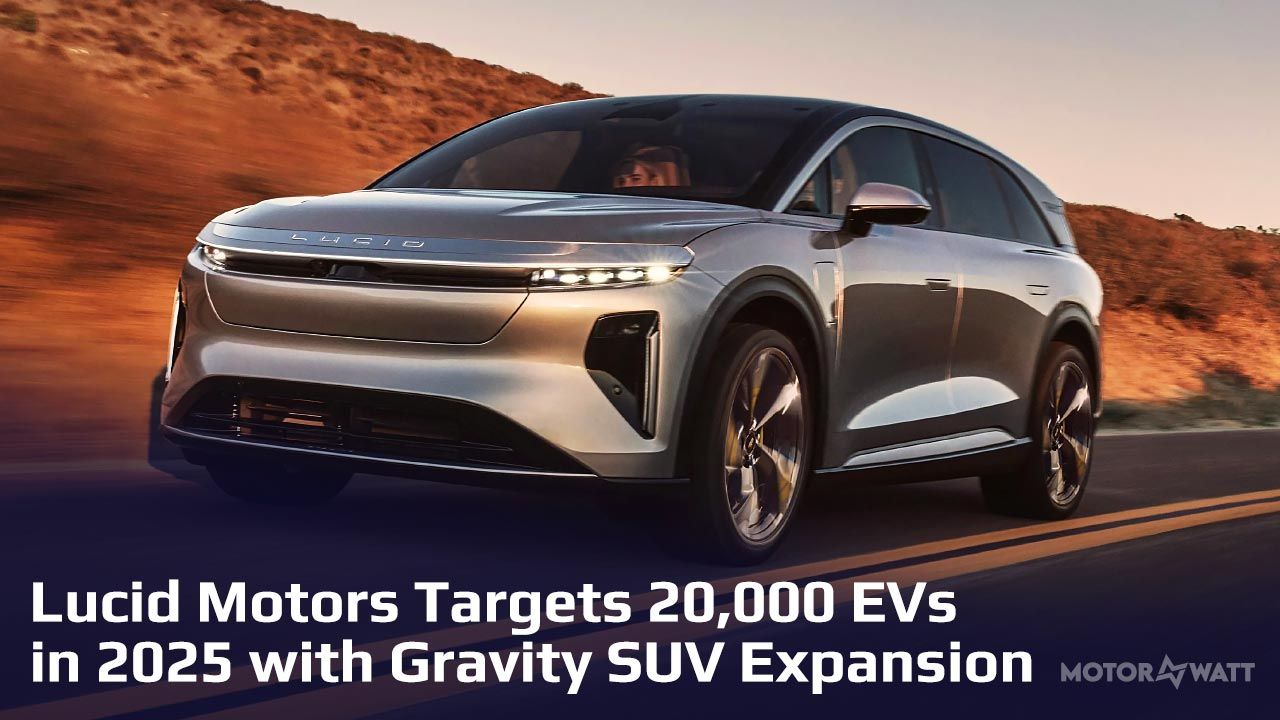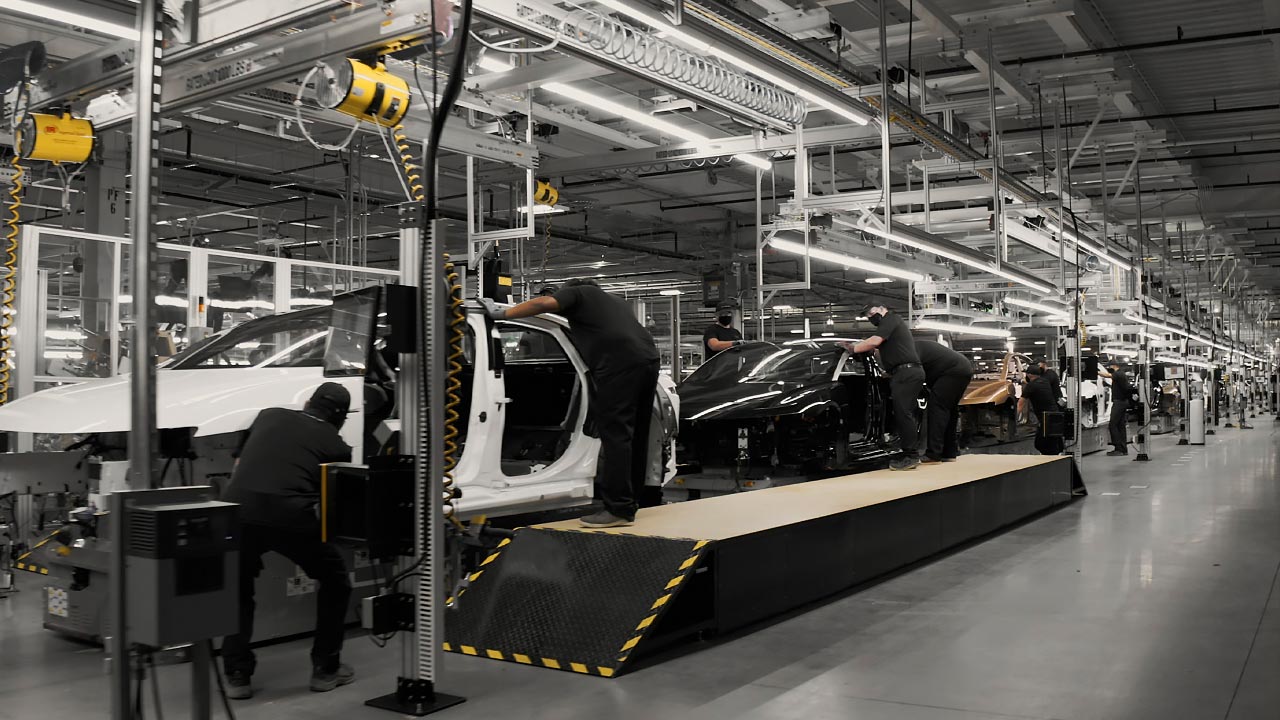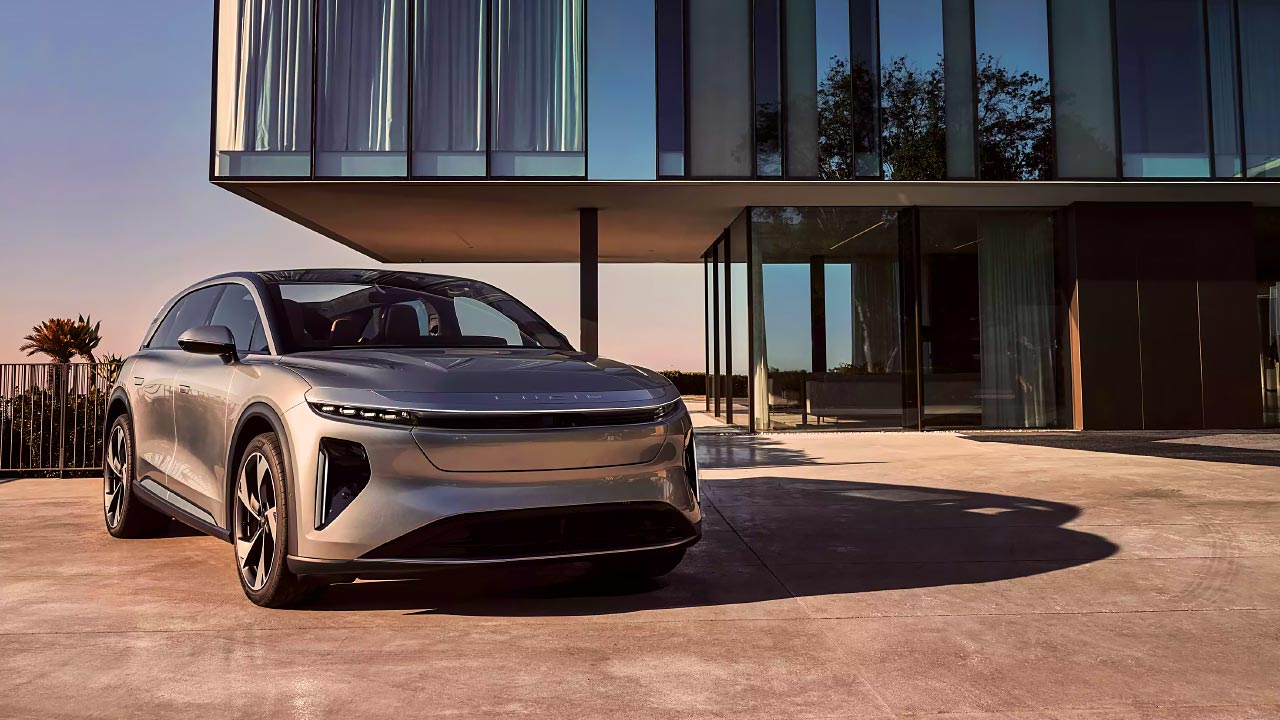Lucid Motors Targets 20,000 EVs in 2025 with Gravity SUV Expansion
Share this article in Social Media:

Lucid Motors is set to double production in 2025, targeting 20,000 EVs with the Gravity SUV. This luxury electric three-row SUV, boasting 450 miles of range and rapid charging, marks Lucid’s push into the mainstream market. The transition comes alongside a leadership change, as Peter Rawlinson exits and Marc Winterhoff steps in as interim CEO.
Lucid Motors’ 20,000 EV Target: A Major Growth Move
Lucid Motors is aiming for a massive production leap in 2025, setting a goal of 20,000 EVs—more than doubling its 2024 output of 10,241 vehicles. The California-based automaker is banking on the success of its second model, the Lucid Gravity SUV, to achieve this ambitious target. Production at its Casa Grande, Arizona facility is ramping up, with a retooled assembly line featuring 247 robots to streamline manufacturing. However, history has shown that scaling production is no small feat, especially in the competitive EV space.
- Lucid produced 9,029 vehicles in 2024, delivering 10,241 units.
- The 2025 goal hinges on the Gravity SUV, with the Grand Touring trim starting at $94,900.
- Automated production improvements aim to enhance efficiency at its Arizona plant.
Why the Gravity SUV is Lucid’s Key to Expansion
The Lucid Gravity SUV is designed to tackle the lucrative electric SUV segment, offering seating for seven, an impressive 450-mile range, and a 6,000-pound towing capacity. Unlike the Air sedan, which targets a niche luxury sedan market, the Gravity is built for families and adventure seekers alike. With its aerodynamic design and cutting-edge 924-volt fast-charging system, it’s positioned to compete with Tesla’s Model X and Rivian’s R1S. The question remains: Can Lucid’s SUV gain traction in an increasingly crowded EV market?
- First deliveries of the Gravity SUV began in early 2025.
- It features a class-leading drag coefficient of 0.24, improving efficiency.
- The Grand Touring trim supports ultra-fast charging, adding 200 miles in just 13 minutes.
CEO Shake-Up: What Peter Rawlinson’s Exit Means for Lucid
In a surprise leadership shift, long-time CEO Peter Rawlinson stepped down in early 2025, transitioning to a “Strategic Technical Advisor” role. Stepping in as interim CEO is Marc Winterhoff, previously Lucid’s Chief Operating Officer. While Winterhoff brings operational expertise, he lacks Rawlinson’s engineering background—something that played a critical role in Lucid’s technological advancements. The timing of the transition, just as Lucid gears up for its biggest production push, raises questions about the company’s long-term strategy.
- Peter Rawlinson served as CEO & CTO since 2016.
- Marc Winterhoff, a former consultant, is now leading Lucid through its expansion.
- The board has launched a search for a permanent CEO.
Production Challenges: Can Lucid Avoid Past Pitfalls?
Scaling production has been a challenge for Lucid. Back in 2021, after going public via SPAC, the company projected far higher sales than it ultimately achieved. Now, with a 20,000-unit goal for 2025, the stakes are even higher. Analysts remain skeptical, questioning whether demand will match supply. Additionally, despite increased deliveries, Lucid reported a staggering $2.7 billion net loss in 2024, raising concerns about profitability.
- Lucid lost $2.7 billion in 2024 despite higher sales.
- Demand for the Gravity SUV is crucial to meeting the 2025 target.
- Some analysts argue that doubling production may not guarantee profitability.
Saudi Funding and Financial Uncertainty
Lucid’s financial stability has been a topic of debate, with Saudi Arabia’s Public Investment Fund (PIF) providing consistent cash infusions to keep the company afloat. In 2024 alone, Lucid secured $1 billion from PIF, but with its cash burn rate, additional funding will likely be necessary. Meanwhile, some investors remain concerned about Lucid’s long-term sustainability if it doesn’t reach profitability soon.
- Lucid had $1.6 billion in cash at the end of 2024.
- Saudi Arabia’s PIF remains its majority shareholder.
- Lucid's financials depend on strong Gravity SUV sales.
EV Market Pressures: Can Lucid Compete?
The EV market isn’t what it was a few years ago. Slower adoption rates in the U.S., shifting federal incentives, and increasing competition from both legacy automakers and emerging brands like BYD are creating new hurdles. Lucid’s premium pricing places it in direct competition with Tesla’s Model X and Rivian’s R1S, but its brand is still young compared to these established players. Additionally, potential policy shifts under the Trump administration could impact federal EV subsidies, further complicating the landscape.
- The Tesla Model X remains a dominant force in the luxury EV SUV market.
- Chinese automakers like BYD are expanding globally with more affordable EVs.
- Federal policy changes could impact EV incentives in the U.S.
Lucid’s Future: Beyond the Gravity SUV
Looking beyond 2025, Lucid is planning to introduce a midsize EV platform, possibly named “Earth,” targeting a broader audience with a sub-$50,000 price point. This three-tier strategy—Air, Gravity, and the upcoming midsize model—mirrors Tesla’s early approach. However, execution remains key. The Gravity must succeed for Lucid to fund future developments, and with a new CEO at the helm, the company’s long-term direction is uncertain.
- Lucid’s midsize EV is expected in 2026.
- A sub-$50,000 price could expand its customer base.
- Success of the Gravity SUV is critical for future investments.
Final Thoughts: Can Lucid Deliver?
Lucid Motors is at a turning point. With an ambitious production target, the Gravity SUV rollout, and a major leadership change, 2025 will determine whether the brand can evolve from a niche luxury startup to a major EV contender. The success of the Gravity—and Lucid’s ability to balance scale with profitability—will be the ultimate test. Whether it can achieve its lofty goals remains to be seen, but one thing is clear: the EV market is watching closely.
- Lucid must scale production efficiently to hit 20,000 vehicles in 2025.
- Market competition and financial stability remain key challenges.
- CEO transition adds uncertainty as Lucid enters a crucial year.













